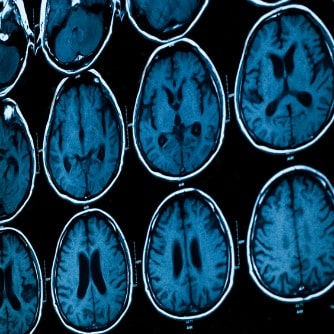Representing over 54,000 radiologists, radiation oncologists, medical physicists and related scientists, the Radiological Society of North America (RSNA) convened its 100th Scientific Assembly and Annual Meeting in Chicago, Illinois USA.
More than 300 courses covered topics on critical issues in every subspecialty. Of particular clinical interest were the presentations for diagnostics for Alzheimer’s Disease.
Alzheimer’s Disease International reports that as of 2013, there were an estimated 44.4 million people with dementia worldwide. This number is projected to increase to an estimated 75.6 million in 2030, and 135.5 million in 2050, largely attributable to demographic aging that reflects the successes of improved health care over the last century. Many are now living longer and healthier lives and so the world population has a greater proportion of older people.
[“Dementia statistics,”Alzheimer’s Disease International; http://www.alz.co.uk/research/statistics; accessed 2 Sept. 2014.]
There is currently no cure for Alzheimer’s disease or for most other causes of dementia. From an anti-aging perspective, at this time it is most essential to ascertain how to prevent the disease from occurring and how to stop its progression. As such, it is critical to innovate diagnostic approaches to ascertain early detection of, and track therapeutic progress for, Alzheimer’s Disease.
Jeffrey W. Prescott, MD, PhD, from Duke University Medical Center (North Carolina, USA), presented “Establishing the Structural Connectome as a Quantitative Imaging Biomarker: Application to Alzheimer’s Disease” (Abstract # NRS399). The study reports that changes in brain connections visible on MRI could represent an imaging biomarker of Alzheimer’s disease. Specifically, changes in the brain’s structural connectome, a map of white matter tracts that carry signals between different areas of the brain, may be an important biomarker to both assess brain damage in early Alzheimer’s disease and monitoring the effect of new therapies. The researchers correlated changes in the structural connectome with results from florbetapir positron emission tomography (PET) imaging, a technique that measures the amount of beta amyloid plaque in the brain. Increased florbetapir uptake corresponds with greater amounts of the protein. The results showed a strong association between florbetapir uptake and decreases in strength of the structural connectome in each of the five areas of the brain studied. The study authors submit that: “These results suggest that it may be possible to use structural network topology as an imaging biomarker of Alzheimer’s disease, and therefore as a target for therapy early in the course of AD.”
From large multi-national corporations to smaller businesses, the Technical Exhibits showcased over 700 industry leaders who presented the latest products, equipment, services and software relevant to this burgeoning field.
Completing a successful 100th Annual Meeting, the Radiological Society of North America (RSNA) assuredly will celebrate many more years of being positioned as the leading professional organization for the medical imaging community.
Review Prepared by Ronald M. Klatz, M.D., D.O.




